La Souveraine - Hospital No. 2
Designated as Hospital No. 2 of Base Hospital 31, the Hotel La Souveraine provided officers' quarters when the personnel of BH 31 arrived in Contrexeville on January 2, 1918. When the hospital was expanded by the addition of personnel from Unit G, the nurses from this group arrived on March 12, 1918 and were assigned temporary quarters in the hotel. (After one month, they were moved to other quarters, primarily Hotel Moderne, where nurses of BH 32 were quartered.) As Hospital No. 2, the hotel housed surgical services of BH 31. On January 9, 1919, as the services of BH 31 were drawing to a close and many patients had already been evacuated to other nearby hospitals, an emergency operating room was established at Hotel La Souveraine. As the unit awaited orders for going home, the nurses were again housed in the hotel on the upper floors.
Source: Kaletzki, Charles Hirsch. Official history USA Base Hospital No. 31 of Youngstown, Ohio: And Unit G of Syracuse University. Syracuse, NY, Craftsman Press, 1919.
The Hotel Souveraine, in peace times the most luxurious and exclusive hostelry, was likewise the best preserved and most attractive building. Its architecture was typically late French, being faced with stucco and carved sandstone ornaments. Its three floors were planned identically. A wide corridor lighted from the north divided the building. All rooms were about uniform in size, exceptionally well lighted and had unusual toilet facilities, bath rooms being part of all the two and three-room suites into which the entire building was divided. [Kaletzki, p. 34]
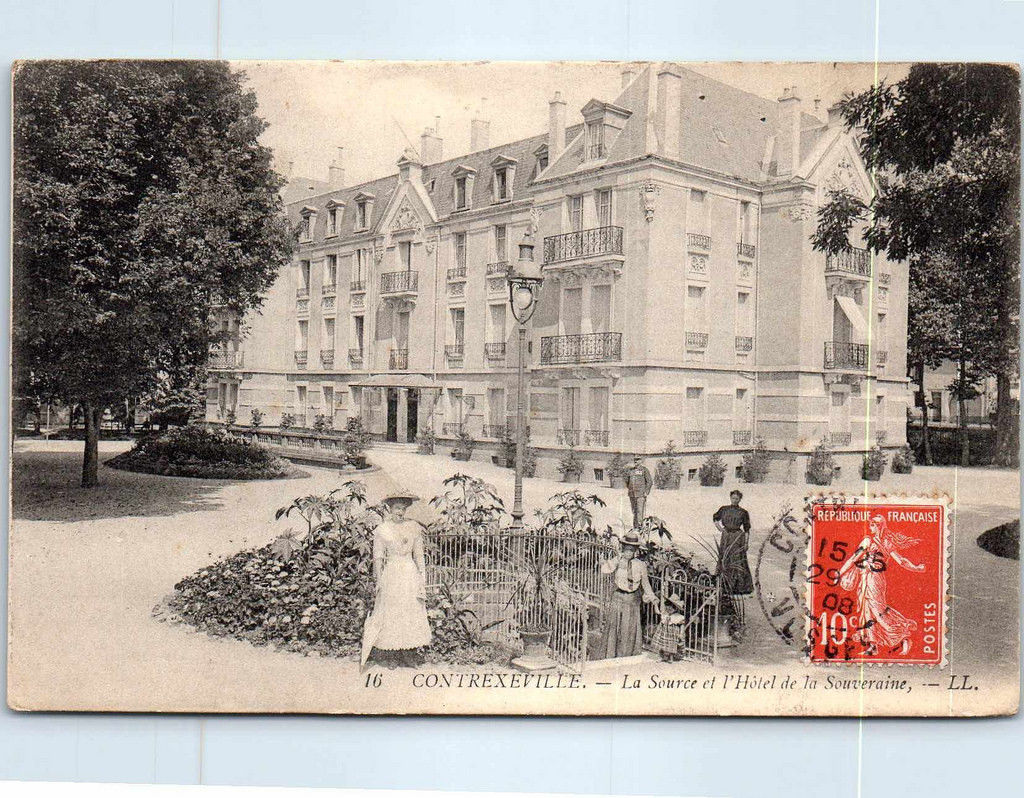
Postcard image, Hotel La Souveraine, (image captured from Ebay.)
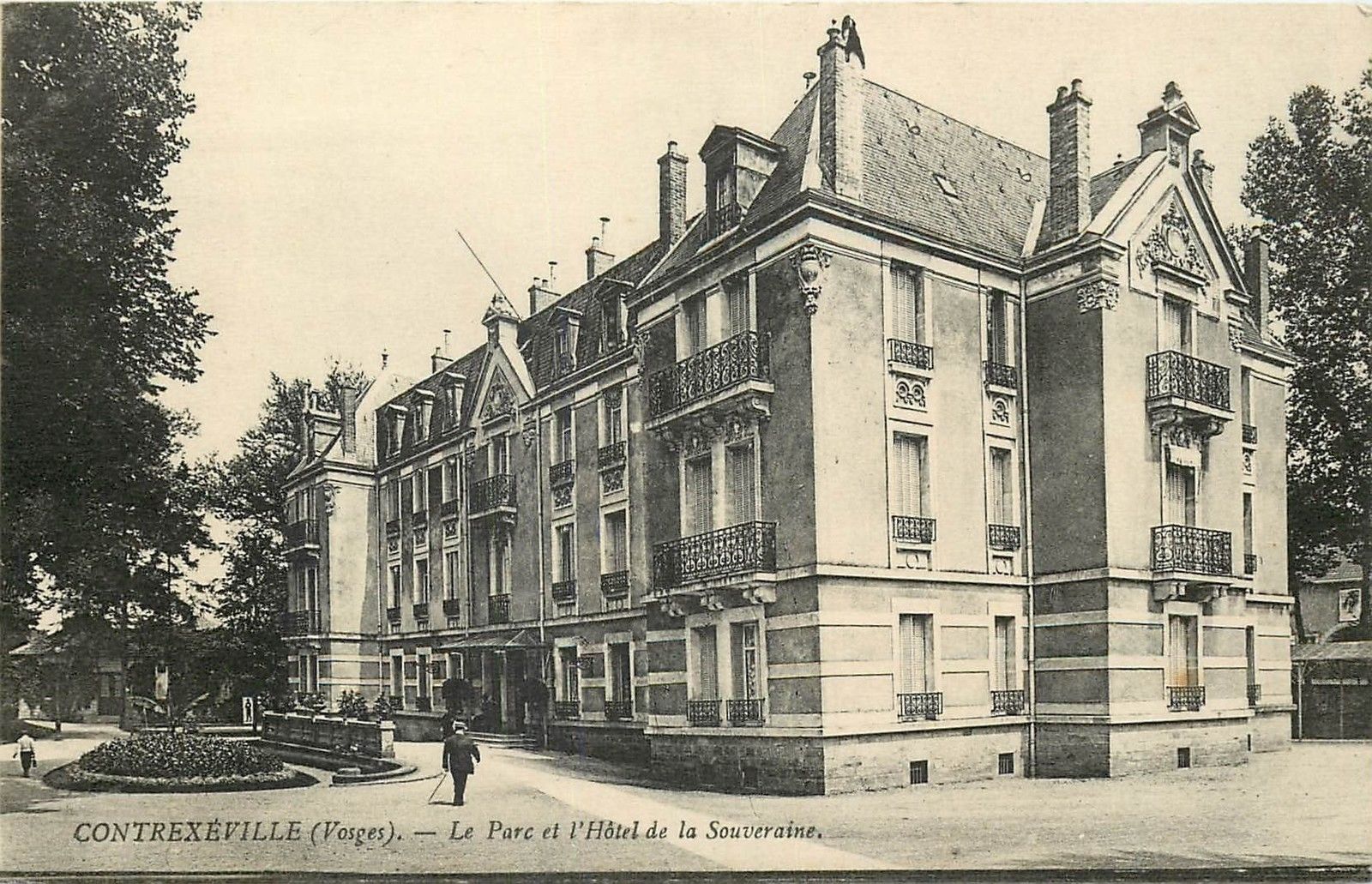
Postcard image, Hotel La Souveraine, (image captured from Ebay.)
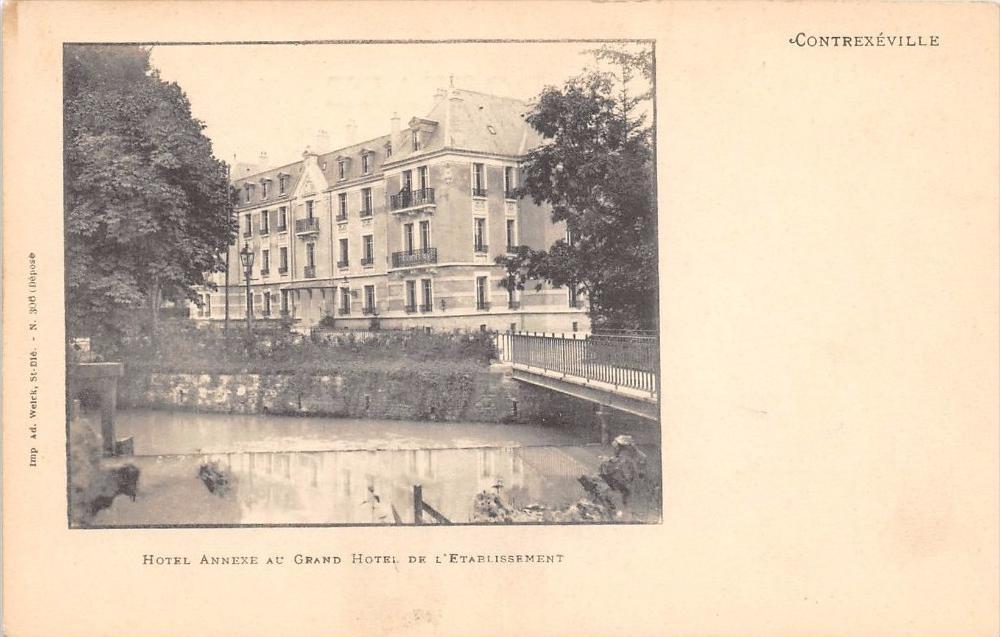
Postcard, Hotel La Souveraine(image captured from Ebay.)
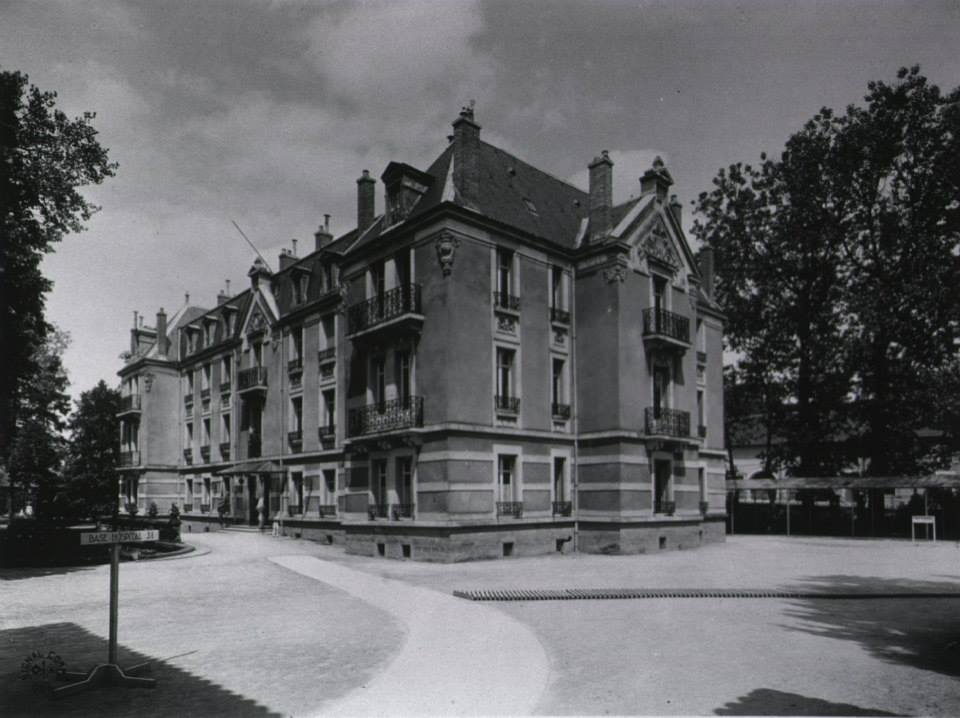
Hotel La Souveraine (image from the National Library of Medicine)
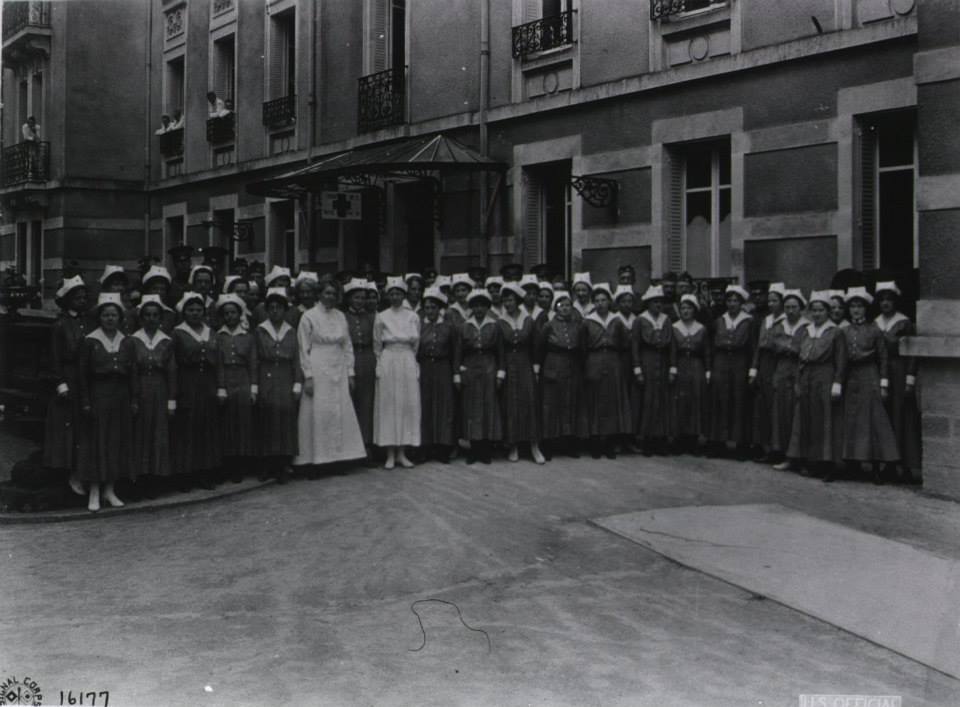
Personnel of Hospital No. 2, Base Hospital 31 (image from the National Library of Medicine)
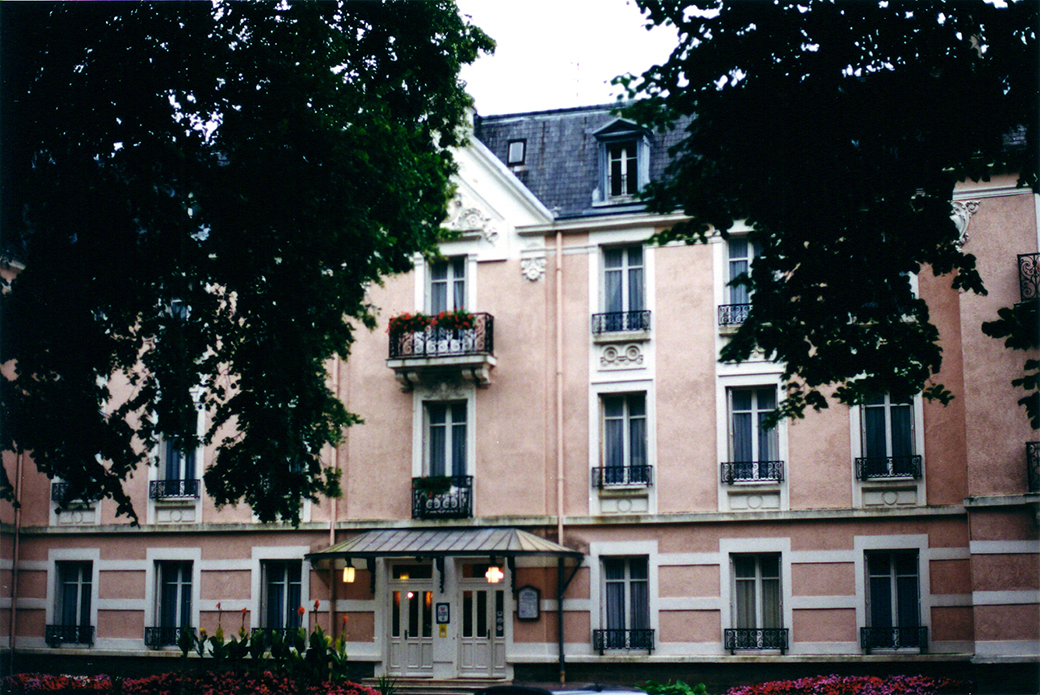
Hotel La Souveraine, 2000 (photo by Molly Daniel)
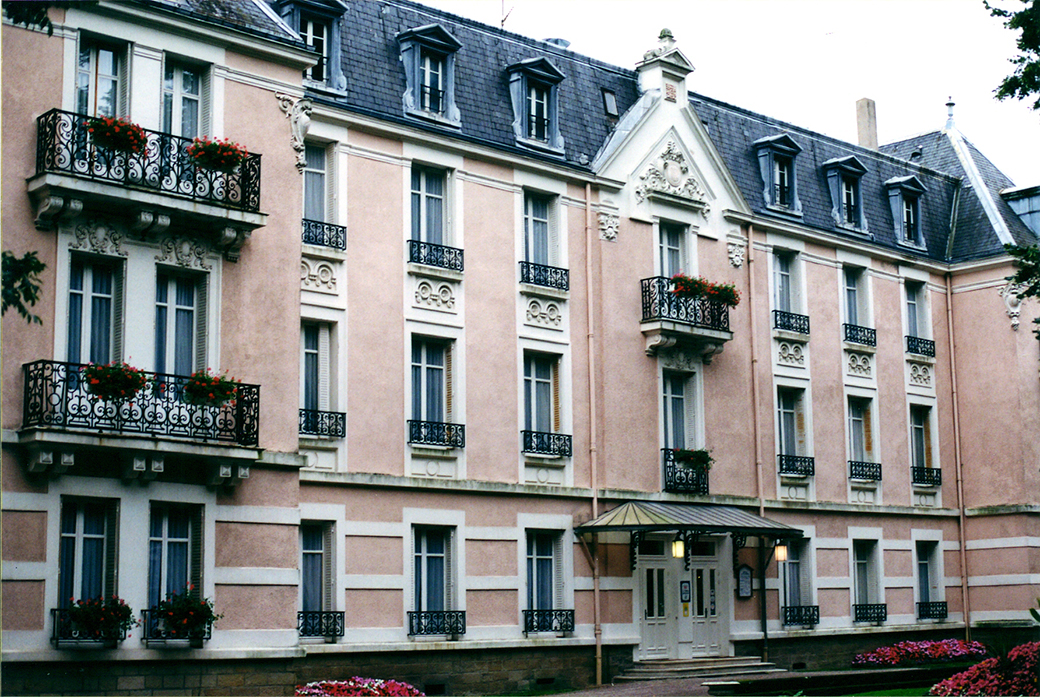
Hotel La Souveraine, 2000 (photo by Molly Daniel)
The Eye, Ear, Nose and Throat department was established in the Souveraine, when that hotel building was taken over for use for general headquarters and specialty services. The quarters, although small, were accessible and capable of efficient arrangement. The equipment of the department consisted of the regular army cases for eye, ear, nose and throat, together with a complete outfit for refraction. These were supplemented by some special instruments including a magnet which proved ample for all requirements of the department.
The work until June, 1918, was largely with French population, who came from surrounding territory, there being no French specialists practicing even in the larger cities, all having been drawn into the French Army. Perhaps the greatest military activity of the department was in the care of gassed cases, more than 1,200 of which were treated at Base Hospital No. 31. Of the total number of gas cases, American and Allied, however, only about 25 per cent required special attention. A great number of the remainder were cared for in routine ward orders, when symptoms were not especially acute.
Contrary to early expectations the injuries occurring in our specialty constituted only a small proportion of the total casualties and thus the share of war surgery was small. Despite the small number of emergency operations performed there have been occasions when most unusual surgical conditions have been cared for. The daily clinics, conducted since the arrival of the first large number of patients, have provided much activity for the department, more than 3,300 patients being cared for. Of this number 1,833 attended the eye clinic. Two hundred and twenty-six pairs of glasses were fitted. [Kaletzki, p. 156]